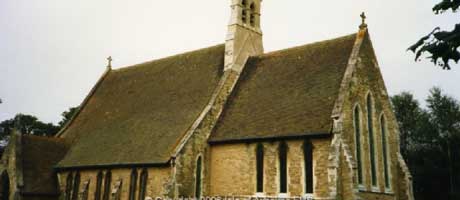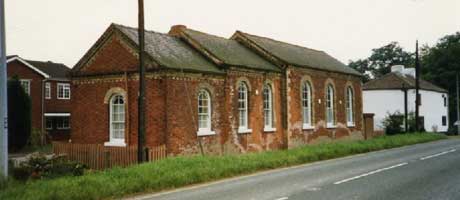Eastoft
Before the boundary changes of 1974 and the emergence of Humberside, Eastoft village held the unusual distinction of being located within two counties those of Yorkshire and Lincolnshire. This factor resulting and being most evident when, before Vermuyden's drainage of the Isle, the navigable River Don meandered through the very centre and thus formed a natural boundary line. Some 360 years on, the river is no more, the last vestiges of the channel drying up in the mid 1800's. In more recent times a neatly grassed area running midway and half the length of the parallel roadways provides a clue as to where the old boundary existed and this pleasing feature is further enhanced by several mature trees that grow there.
A little marble plaque mounted within the roadside wall tells us "The seven trees opposite were planted to commemorate the Coronation of H.M. King Edward VII 1901. The improvement to the green was carried out ta commemorate the Jubilee of H.M. Queen Elizabeth II 1977."
Adjacent the commemorative plaque stands the village war memorial, attractively sited in a semi-circular enclosure and bearing the names of the men who gave their lives in two world wars.
The parish church is situated on the "Yorkshire" side of the village and was consecrated "St. Bartholomew's" by His Grace the Archbishop of York on the 13th November, 1855. It was erected on the plans of J. Pearson, Esq., and is of the early English style. It consists of chancel with vestry on the north side, nave with porch on the south side and a bell gable, containing three bells. The whole cost of the church, with churchyard and parsonage was borne by Lady Strickland, with the inclusion of a generous endowment of £150 per annum. The present incumbent is Rev. P. Ireson, the secular affairs of the church being administered by Messrs. E.P. Coulman and L. Harrison in their capacity as Churchwardens.
Immediately to the south stands the Church of England Primary School, opened on 28th November 1961 by Mrs. R.H. Coulman and dedicated by the Bishop of Sheffield, Leslie Stannard Hunter. The original school, on almost the same site, was built in 1847, chiefly through the solo efforts of Rev. F. Sugden, Vicar of Adlingfleet. It was enlarged in 1873 and further enlarged in 1902.
The Primitive Methodist Chapel, erected in 1869, is one of several properties that are actually built upon the old river bed. The adjoining building, originally a Sunday School, has these later years become a Doctors' Surgery. Directly over the road, on the "Lincolnshire" side is the village Post Office cum Grocery Store.
With advanced farming techniques and mechanisation much to the fore in Axholme generally and the resultant farm labour requirement reaching an all time low, the principal employer in Eastoft would now appear to be L. Harrison & Co., Joiners and Building Contractors, their premises situated near the junction of Penny Green Row and Washinghall Lane.
Two public houses serve the community, the River Don and the Haywain, both on Sampson Street which is a part of the A161 road running directly through the village. The total township comprises somewhat more than 1,300 acres and for the most part this area is little over sea-level height.
Family connections are still in evidence in relation with the mother parish of Crowle, particularly among many of the following names which are traditionally associated with Eastoft, these being : Brown, Brunyee. Everatt, Fowler, Halkon, Sampson, Scholey, Cowling, Oades, Sykes, Till, Shipley and Wroot.
Due to the complexity in terms of its location, Parish Registration for Eastoft village has to be accepted as threefold. Prior to 1855 all B.M. & D. entries fell within the parishes of Adlingfleet and Crowle, but in 1855, Eastoft, for ecclesiastical purposes, became established as a parish in its own right. The records for Adlingfleet and Eastoft can be consulted at Doncaster Record Office, and those for Crowle at Lincoln Record Office.


